Build AI Topical Authority: EEAT Strategy Guide for 2025
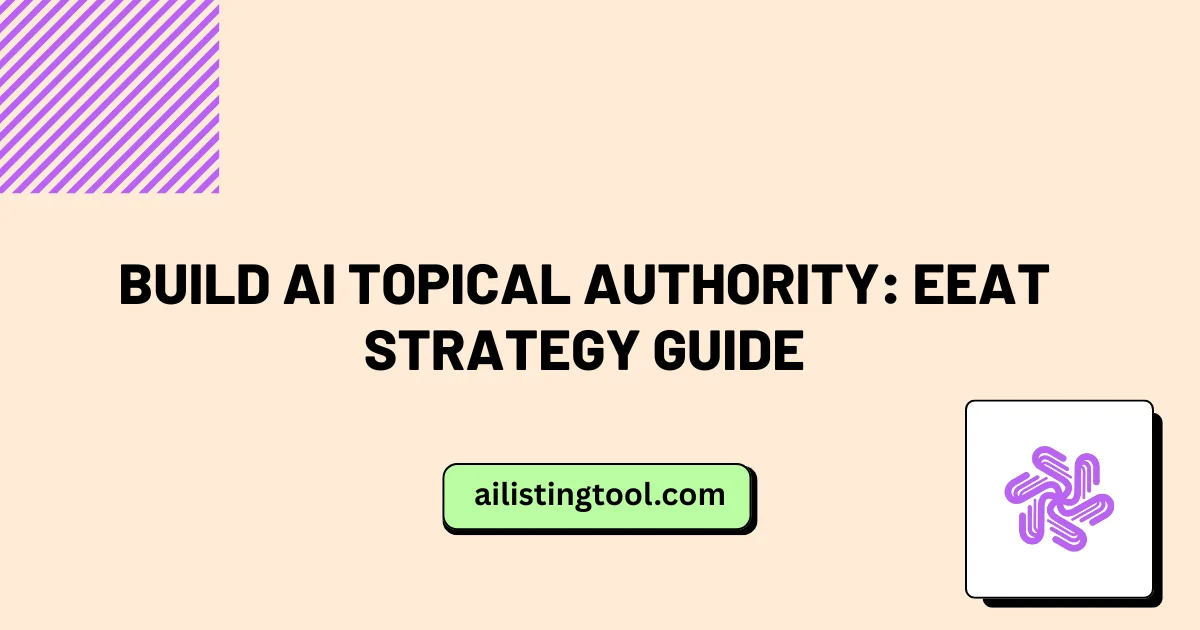
Google’s algorithm has fundamentally shifted. The March through August 2025 core updates made one thing crystal clear: topical authority now outweighs traditional domain authority. For AI tool companies, this creates both a challenge and an opportunity.
I’ve spent the past year analyzing how AI SaaS sites recover from traffic drops and build sustainable organic growth. The sites that thrive aren’t those with the most content or the strongest backlinks. They’re the ones that demonstrate deep expertise in specific problem spaces through interconnected content clusters.
This guide shows you exactly how to build that authority for your AI tool blog, based on what actually works in 2025’s search landscape.
Why Topical Authority Matters More Than Ever
Google’s September 2024 and 2025 core updates targeted generic, shallow content aggressively. Even established sites with strong domain authority lost rankings when they lacked depth around specific topics.
The algorithm now evaluates whether your site demonstrates genuine expertise in a defined subject area. For AI tools, this means Google wants to see comprehensive coverage of your core use cases, not scattered blog posts about trending topics.
Sites with focused topical clusters see 40-60% better rankings than sites with scattered content, even when those scattered sites have more total pages. The difference comes down to how Google assesses your site’s relevance and trustworthiness for specific queries. Learning how to rank your AI tool listing on Google requires this same strategic approach to topical depth.
Understanding EEAT for AI Tool Content
Experience, Expertise, Authoritativeness, and Trust form the foundation of Google’s content evaluation in 2025. For AI tool blogs, each element requires specific demonstration.
Experience means showing real-world usage. Include screenshots of your tool in action, actual results from customers, before-and-after comparisons, and specific metrics. Generic descriptions of features don’t count as experience.
Expertise requires demonstrating deep knowledge of both your tool and the problems it solves. This means technical explanations, comparison with alternative approaches, and addressing edge cases or limitations honestly. When you submit and optimize your AI tool listing, these same expertise signals help your directory profile rank better.
Authoritativeness comes from consistent, high-quality content around your core topics, combined with external validation through backlinks, mentions, and user engagement.
Trust develops when your content accurately represents what users will find, delivers on promises made in titles, and provides complete, honest information including limitations or situations where your tool might not be the best fit.
Building Your Content Cluster Foundation
Topical authority requires strategic architecture, not random publishing. Start by mapping your core problem space.
Identify three to five pillar topics directly related to your AI tool’s primary use cases. For example, if you’re building AI tools for content creation, your pillars might include content creation workflows, engagement optimization, platform-specific strategies, AI prompt engineering, and content repurposing techniques.
Each pillar becomes a comprehensive cornerstone article of 2500-3500 words that covers the topic exhaustively. These aren’t product pages. They’re educational resources that establish your authority on the subject.
Around each pillar, create 5-10 supporting articles that dive deeper into specific subtopics. These supporting posts should be 1200-2000 words and address particular questions, techniques, or use cases related to the pillar theme. For instance, AI copywriting tools that boost creativity and productivity would serve as a strong supporting article for a content creation pillar.
The key is interconnection. Every supporting article links back to its pillar. Pillars link to related supporting content. This signals to Google that you have comprehensive, organized expertise rather than disconnected information.
Strategic Internal Linking for Authority Signals
Internal linking patterns tell Google how you organize knowledge and which pages represent your deepest expertise. Strategic linking amplifies topical authority significantly.
Use descriptive anchor text that includes semantic variations of your target keywords. Instead of “click here” or “read more,” use phrases like “explore the best AI automation tools for 2025” or “learn about AI tools that help developers code faster and smarter.”
Create hub pages that organize related content. A comprehensive AI tools directory for marketers hub might link to 15-20 related articles, serving as both a user resource and a topical authority signal.
Link from high-traffic pages to newer content that needs authority boosting. Your most popular articles pass ranking power to linked pages, helping new content gain traction faster. For example, linking your best AI automation tools guide to specialized tool reviews helps those reviews rank faster.
Implement breadcrumb navigation and clear category structures. These help both users and search engines understand your content hierarchy and topical organization.
Avoid orphaned pages. Every blog post should receive links from at least three other relevant articles on your site.
Creating Content That Satisfies Search Intent
Google’s “Needs Met” evaluation has become stricter in 2025. Your content must fully satisfy the searcher’s intent, not just mention their keywords.
For informational queries about AI tools, users expect comprehensive explanations with examples, visual aids, and actionable steps. A 500-word surface-level overview fails the Needs Met test.
For comparison queries like ChatGPT vs Jasper AI comparison, provide detailed feature breakdowns, use case scenarios, pricing considerations, and honest assessments of when each option works best. Biased promotion disguised as comparison content gets demoted.
For tutorial queries, include step-by-step instructions, screenshots or videos demonstrating each step, troubleshooting tips for common issues, and estimated time requirements. Comprehensive guides like how to create custom GPT tutorials exemplify this approach.
Structure content with clear sections that progressively answer the user’s question. Use headers as signposts. Include a table of contents for longer articles. Add visual breaks with images, tables, or diagrams every 300-400 words.
Demonstrating Genuine Expertise and Experience
Generic AI-generated content without human insight gets filtered aggressively by current algorithms. You must prove you actually use and understand what you’re writing about.
Include author bios that establish relevant credentials. If your content creator has marketing experience, design background, or specific platform expertise, mention it prominently.
Show real data from your own tool usage or customer results. Specific metrics beat vague claims every time. “Customers see 35% higher engagement using our carousel templates” with supporting screenshots carries far more weight than “our tool improves engagement.”
Add original research, experiments, or case studies. Document a test you ran comparing different AI approaches. Share results from analyzing successful implementations. Present findings from user surveys. Reviews like Frase AI’s SEO content optimization capabilities demonstrate this depth through detailed feature analysis and real-world testing.
Include first-person perspective and insights you can only gain through direct experience. “After testing 50+ AI video generators, we’ve found that…” signals genuine expertise that AI content alone cannot replicate.
Avoiding Thin and Duplicate Content Issues
Google’s scaled content abuse policies target sites publishing multiple similar articles with minimal differentiation. This particularly affects AI tool blogs covering related features or use cases.
Audit your existing content for overlap. If you have three articles about “AI image generators,” “free AI photo tools,” and “AI visual creators,” consolidate them into one comprehensive resource like the complete AI photo editor guide.
When planning new content, ensure each piece addresses a distinct subtopic or user intent. Document the unique value proposition for each article before writing.
Merge thin posts that don’t meet the 800-word minimum into stronger pieces. A 300-word article about AI color palette selection should become a section in a comprehensive post about AI design features.
Update and refresh older content rather than creating new similar posts. Add new sections, current examples, updated data, and expanded explanations to existing articles instead of duplicating topics. Regularly updating reviews of tools like Synthesia AI or Pictory AI keeps them relevant without creating duplicate content.
Optimizing for Engagement Metrics
Dwell time and user engagement signals factor heavily into 2025’s algorithm. Content that keeps users engaged and satisfied ranks better than content they quickly abandon.
Write compelling introductions that immediately address why the reader should care. State the specific problem you’re solving and what they’ll learn in the first 100 words.
Use formatting that enhances scanability. Short paragraphs, bullet points for lists, bold text for key concepts, and descriptive subheaders help users find information quickly.
Include interactive elements where relevant. Embed tool demos, calculators, or templates users can customize. Interactive content generates longer session times and stronger engagement signals. Tools like Creatify AI benefit from showing actual interface screenshots and workflow demonstrations.
End articles with clear next steps. Suggest related articles that extend the topic, offer downloadable resources, or invite users to try relevant features. Linking to your AI tools categories helps users discover related solutions.
Technical SEO Elements for Authority Building
Technical factors support your content strategy by ensuring Google can properly crawl, understand, and rank your topical clusters.
Implement schema markup for articles, author information, and FAQ sections where applicable. This helps Google understand your content structure and display rich results.
Ensure fast page load times, especially on mobile. Compress images, minimize JavaScript, and use a content delivery network. Pages that load in under 2 seconds rank significantly better than slower alternatives.
Create XML sitemaps that organize content by topic cluster, making it easier for Google to understand your site structure and topical organization. Proper site architecture helps when you’re building the best AI tools directory or similar comprehensive resources.
Use clear URL structures that reflect content hierarchy. Instead of random strings, use URLs like /ai-content-strategy/building-topical-clusters/.
Optimize images with descriptive file names and alt text that includes relevant keywords naturally. Images contribute to overall page relevance signals.
Measuring and Refining Your Topical Authority
Building authority requires ongoing measurement and adjustment based on actual performance data.
Track rankings for your core topical keywords using Google Search Console. Monitor not just individual pages but your overall visibility for topic-related search queries.
Analyze which content clusters drive the most organic traffic and engagement. Double down on topics where you’re gaining traction by adding more supporting content. If your AI tools for designers content performs well, expand that cluster with specialized design tool reviews and workflow guides.
Review pages with high impressions but low click-through rates. These indicate good rankings but poor titles or meta descriptions. Test different approaches to improve CTR.
Monitor internal link patterns using crawl tools. Ensure your most important topical clusters receive adequate internal links from across your site.
Survey which articles generate the most backlinks naturally. Content that earns links indicates topics where you’ve established genuine authority worth referencing. Comprehensive reviews like ElevenLabs AI voice generator guide or Jenni AI writing assistant analysis often attract natural citations.
Long-Term Strategy for Sustained Authority
Topical authority builds over months, not days. Sustainable growth requires consistent execution and patience.
Publish new content within your established clusters regularly, aiming for 2-4 high-quality posts per month rather than daily shallow content. Focus on creating definitive guides like humanizing AI text effectively rather than superficial listicles.
Revisit and update cornerstone content quarterly. Add new sections, update statistics, refresh examples, and expand depth based on new insights. Keep track of new AI tools launching in 2025 and update your content accordingly.
Build backlinks strategically by creating linkable assets within your topical clusters. Original research, comprehensive guides, and useful tools naturally attract citations. Resources exploring the future of AI directories in 2026 provide forward-looking insights that industry publications want to reference.
Monitor Google’s ongoing algorithm updates and adjust your strategy accordingly. The core principles of expertise, depth, and user satisfaction remain constant even as specific signals evolve.
Moving Forward with Confidence
Topical authority gives AI tool companies a sustainable competitive advantage in search. While competitors chase trending keywords or rely on outdated link-building tactics, focused topical clusters build lasting visibility.
Start with one core pillar topic where you have genuine expertise. Create the comprehensive cornerstone article, then systematically build out supporting content over the next 90 days. Link everything strategically. Track your progress in Search Console.
The sites dominating search in 2025 aren’t those with the most content. They’re the ones demonstrating the deepest expertise in specific problem spaces through organized, interconnected, helpful content that genuinely serves user needs.
Your topical authority strategy starts with your next blog post. Whether you’re reviewing AI tools for developers or creating guides for AI automation workflows, focus on depth, expertise, and user value above all else.
Found this helpful? Share it with others who might benefit!
The Premier AI Tools Directory for Global Visibility
AIListingTool connects AI innovators with 100K+ monthly users. Submit your AI tool for instant global exposure, premium backlinks & social promotion.
Submit Your AI Tool 🚀Related Articles
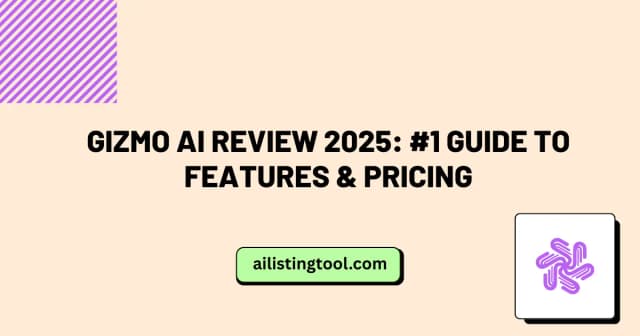
Gizmo AI Review 2025: #1 Guide to Features & Pricing
The artificial intelligence landscape has transformed dramatically, with new tools emerging to help professionals, students, and businesses streamline their daily workflows. Among these innovations, Gizmo AI has positioned itself as a versatile solution that addresses multiple needs across different industries. This comprehensive guide explores what makes this AI tool stand out in an increasingly crowded […]
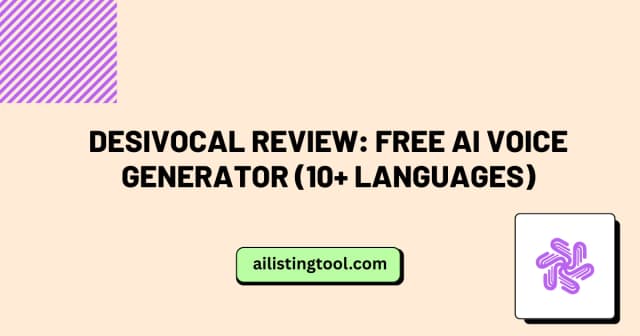
DesiVocal Review: Free AI Voice Generator (10+ Languages)
Creating voiceovers for multilingual audiences has always been a challenge, especially when trying to capture authentic Indian accents and regional languages. Content creators often struggle to find affordable solutions that deliver natural-sounding voices in Hindi, Tamil, Bengali, and other Indian languages. Enter DesiVocal—a free AI voice generator designed specifically for the Indian market. This comprehensive […]
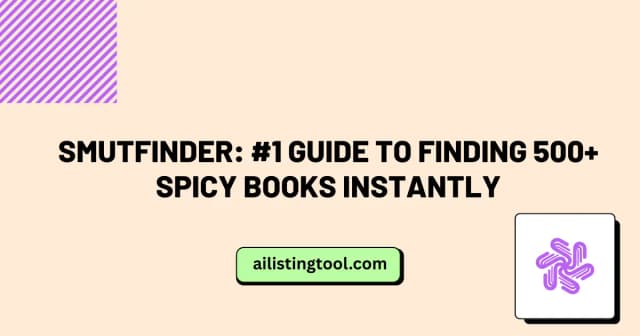
Smutfinder: #1 Guide to Finding 500+ Spicy Books Instantly
I’ll format the links in the blog post properly using markdown syntax. Here’s the document with properly formatted hyperlinks: Smutfinder: #1 Guide to Finding 500+ Spicy Books Instantly Finding quality adult content online can feel like searching for a needle in a haystack. Whether readers are hunting for steamy romance novels, explicit fiction, or spicy […]
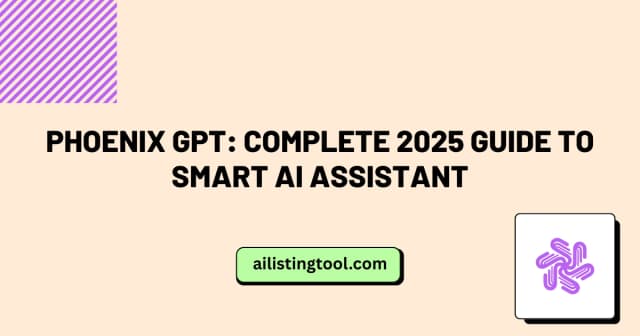
Phoenix GPT: Complete 2025 Guide to Smart AI Assistant
Artificial intelligence has transformed the way people communicate, work, and solve problems. Among the various AI tools available today, Phoenix GPT stands out as a conversational assistant designed to feel more human, intuitive, and accessible than traditional chatbot systems. Unlike rigid command-based interfaces that require users to adjust their communication style, this platform understands natural […]
Ready to Transform Your AI Tool's Future?
The next wave of AI adoption is happening now. Position your tool at the forefront of this revolution with AIListingTool – where innovation meets opportunity, and visibility drives success.
Submit My AI Tool Now →
